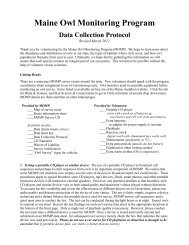Focus Species Forestry - Maine Audubon
Focus Species Forestry - Maine Audubon
Focus Species Forestry - Maine Audubon
Create successful ePaper yourself
Turn your PDF publications into a flip-book with our unique Google optimized e-Paper software.
1. Introduction<br />
It’s a crisp winter morning with fresh<br />
snow weighing heavily on the<br />
branches of the mature spruce and fir.<br />
Two men and a woman—logger,<br />
landowner, and forester—are<br />
observing the bounding tracks of an<br />
American marten that cross the road<br />
from a recently thinned softwood<br />
stand to the mixedwood stand above.<br />
Further on they stop and climb out of<br />
the truck by a patch of dense sprucefir<br />
regeneration, the result of a<br />
shelterwood cut about 10 years ago.<br />
The site is crisscrossed by the tracks<br />
of snowshoe hare, which survive the<br />
winter on hardwood browse but seek<br />
shelter from predators in the low,<br />
Evidence of focus species suggests that the landowner’s<br />
goals of wildlife management and timber harvesting are<br />
being met in this woodlot. Photo: <strong>Maine</strong> <strong>Audubon</strong>.<br />
dense branches of the young conifers. While the primary focus of this ownership is timber<br />
production, they are looking for signs that a healthy balance of wildlife habitat is being<br />
maintained, and the results are encouraging. Signs of both the marten, which requires large areas<br />
of relatively mature forest, and snowshoe hare, which prefers young stands, have been seen,<br />
suggesting that other animals associated with these forest stages should also be doing well.<br />
The goal of this manual is to simplify the task<br />
of integrating timber management and<br />
conservation of biodiversity by identifying<br />
and managing for a few <strong>Focus</strong> <strong>Species</strong> whose<br />
habitat needs cover those of many other<br />
forest species.<br />
Aldo Leopold once wrote, “The first<br />
rule of intelligent tinkering is to<br />
keep all the pieces.” For many<br />
landowners and managers,<br />
maintaining forest wildlife and<br />
other components of biodiversity—<br />
keeping all the pieces—is a high<br />
priority. Most small woodland<br />
owners own their land for reasons<br />
other than timber production, and<br />
recently many large timberland owners have formally committed to conserving biodiversity<br />
through forest certification programs. Thoughtful loggers who harvest the timber also want to be<br />
sure that they are leaving behind a healthy forest.<br />
While managing to protect native biodiversity is an important goal, the specifics are elusive.<br />
There are just too many things to keep track of. For starters, there are 173 species of forest birds<br />
in <strong>Maine</strong>. Add in reptiles, amphibians, mammals, insects, plants, fungi, forest ecosystems, and<br />
genetic diversity and the job of managing your woodlot for biodiversity feels overwhelming.<br />
<strong>Focus</strong> <strong>Species</strong> <strong>Forestry</strong> 1



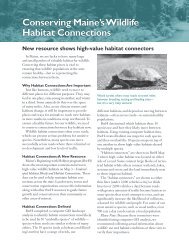
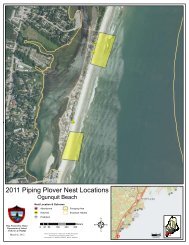
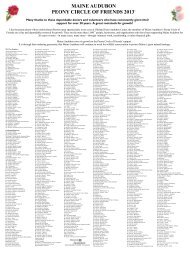
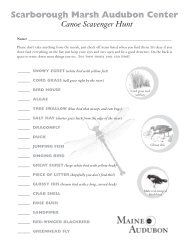


![2012 Loon Count Results [pdf] - Maine Audubon](https://img.yumpu.com/26228732/1/190x245/2012-loon-count-results-pdf-maine-audubon.jpg?quality=85)
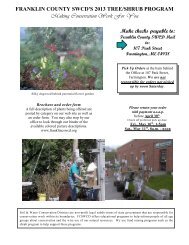
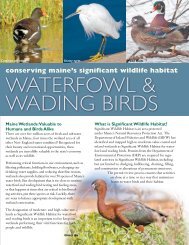
![Lake Fish of Maine (DIFW list) [pdf] - Maine Audubon](https://img.yumpu.com/23282964/1/190x245/lake-fish-of-maine-difw-list-pdf-maine-audubon.jpg?quality=85)
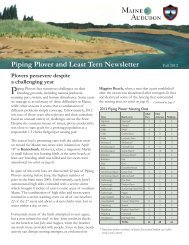

![The Maine Audubon Peony Circle of Friends 2012 [pdf]](https://img.yumpu.com/22707677/1/190x253/the-maine-audubon-peony-circle-of-friends-2012-pdf.jpg?quality=85)
